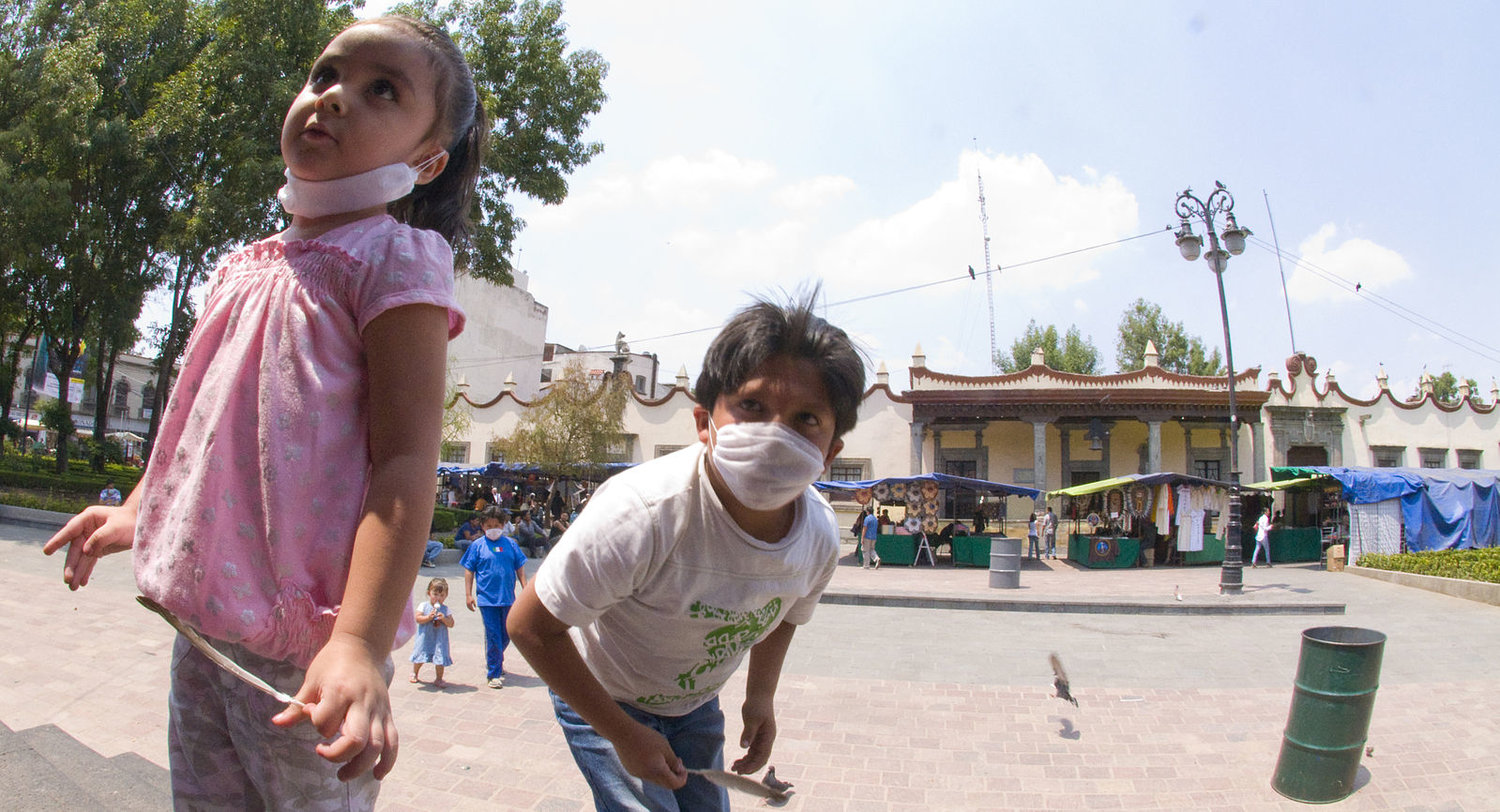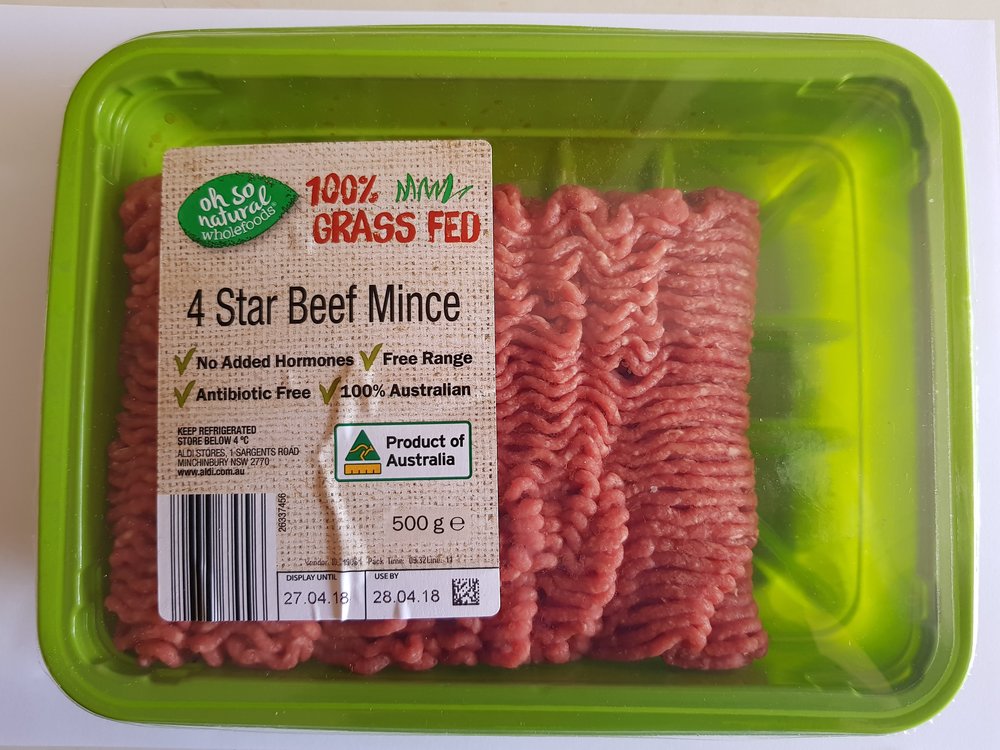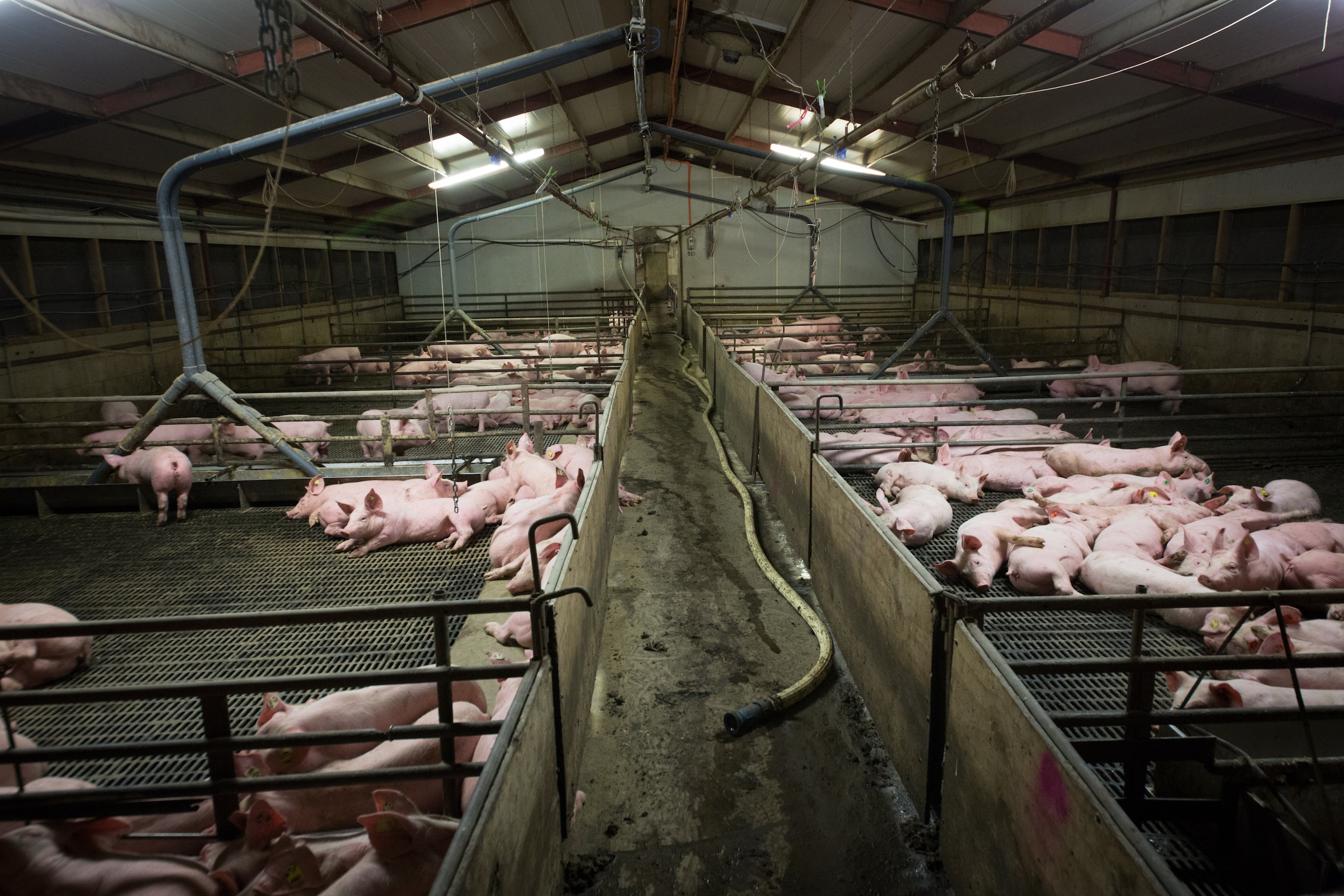If factory farm conditions are unhealthy for animals, they’re bad for people too
By Tia Schwab Source: Independent Media Institute and Stone Pier Press

Lack of governmental oversight of factory farms has created a public health crisis of antibiotic-resistance diseases in people.
In 2014, the Review on Antimicrobial Resistance, commissioned by the UK government and Wellcome Trust, estimated that 700,000 people around the world die each year due to drug-resistant infections. A follow-up report two years later showed no change in this estimate of casualties. Without action, that number could grow to 10 million per year by 2050. A leading cause of antibiotic resistance? The misuse and overuse of antibiotics on factory farms.
Flourishing antibiotic resistance is just one of the many public health crises produced by factory farming. Other problems include foodborne illness, flu epidemics, the fallout from poor air and water quality, and chronic disease. All of it can be traced to the current industrial approach to raising animals for food, which puts a premium on “high stocking density,” wherein productivity is measured by how many animals are crammed into a feeding facility.
Oversight for the way factory farms operate and manage waste is minimal at best. No federal agency collects consistent and reliable information on the number, size and location of large-scale agricultural operations, nor the pollution they’re emitting. There are also no federal laws governing the conditions in which farm animals are raised, and most state anti-cruelty laws do not apply to farm animals.
For example, Texas, Iowa and Nebraska have excluded livestock from their animal cruelty statute and instead created specific legislation aimed at farm animal abuse that makes accepted or customary husbandry practices the animal welfare standard.
After New Jersey created similar legislation, the New Jersey Society for the Prevention of Cruelty to Animals sued the New Jersey Department of Agriculture, claiming that “routine husbandry practices” was too vague. The New Jersey Society won, and as a result, the state’s Department of Agriculture has created more specific regulations.
In North Carolina, any person or organization can file a lawsuit if they suspect animal cruelty, even if that person does not have “possessory or ownership rights in an animal.” In this way, the state has “a civil remedy” for farm animal cruelty.
Still, the general lack of governmental oversight of factory farms results in cramped and filthy conditions, stressed-out animals and workers, and an ideal setup for the rampant spread of disease among animals, between animals and workers, and into the surrounding environment through animal waste.
Antibiotic Resistance
The problem: In 2017, nearly 11 million kilograms of antibiotics—including 5.6 million kilograms of medically important antibiotics—were sold in the U.S. for factory-farmed animals. Factory farms use antibiotics to make livestock grow faster and control the spread of disease in cramped and unhealthy living conditions. While antibiotics do kill some bacteria in animals, resistant bacteria can, and often do, survive and multiply, contaminating meat and animal products during slaughter and processing.
What it means for you: People can be exposed to antibiotic-resistant bacteria by handling or eating contaminated animal products, coming into contact with contaminated water or touching farm animals, which of course makes a farmworker’s job especially hazardous. Even if you don’t eat much meat or dairy, you’re vulnerable: Resistant pathogens can enter water streams through animal manure and contaminate irrigated produce.

Developments: The European Union has been much more aggressive than the U.S. in regulating antibiotic use on factory farms, banning the use of all antibiotics for growth promotion in 2006. But the U.S. is making some progress, too. Under new rules issued by the Food and Drug Administration (FDA), which went into effect in January 2017, antibiotics that are important for human medicine can no longer be used for growth promotion or feed efficiency in cows, pigs, chickens, turkeys and other animals raised for food.
Additionally, 95 percent of medically important antibiotics used in animal water and feed for therapeutic purposes were reclassified so they can no longer be purchased over the counter, and a veterinarian would have to sign off for their use in animals. As a result, domestic sales and distribution of medically important antimicrobials approved for use in factory farmed animals decreased by 43 percent from 2015 (the year of peak sales) through 2017, reports the FDA.
However, the agency still allows routine antibiotic use in factory farms for disease prevention in crowded and stressed animals, so these new rules aren’t nearly enough, says Matthew Wellington, antibiotics program director for the U.S. Public Interest Research Group Education Fund.
“The FDA should implement ambitious reduction targets for antibiotic use in the meat industry, and ensure that these medicines are used to treat sick animals or control a verified disease outbreak, not for routine disease prevention,” Wellington said in a statement, according to the Center for Infectious Disease Research and Policy.
National Resources Defense Council Senior Attorney Avinash Kar agrees. “Far more antibiotics important to humans still go to cows and pigs—usually when they’re not sick—than to people, putting the health of every single one of us in jeopardy.”
Water and Pollution
The problem: Livestock in this country produce between 3 and 20 times more waste than people in the U.S. produce, according to a 2005 report issued by the Environmental Protection Agency (EPA). That’s as much as 1.2-1.37 billion tons of manure a year. Some estimates are even higher.
Manure can contain “pathogens such as E. coli, growth hormones, antibiotics, chemicals used as additives to the manure or to clean equipment, animal blood, silage leachate from corn feed, or copper sulfate used in footbaths for cows,” according to a 2010 report by the National Association of Local Boards of Health. Though sewage treatment plants are required for human waste, no such treatment facility exists for livestock waste.
Since this amount far exceeds what can be used as fertilizer, animal waste from factory farms typically enters massive, open-air waste lagoons, which spread airborne pathogens to people who live nearby. If animal waste is applied as fertilizer and exceeds the soil’s capacity for absorption, or if there is a leak or break in the manure storage or containment unit, the animal waste runs off into oceans, lakes, rivers, streams and groundwater.
Extreme weather increases the possibility of such breaks. Hurricane Florence, for example, flooded at least 50 hog lagoons when it struck the Carolinas last year, and satellite photos captured the damage.
Whether or not the manure is contained or spread as fertilizer, it can release many different types of harmful gases, including ammonia and hydrogen sulfide, as well as particulate matter comprised of fecal matter, feed materials, pollen, bacteria, fungi, skin cells and silicates, into the air.
What it means for you: Pathogens can cause diarrhea and severe illness or even death for those with weakened immune systems, and nitrates in drinking water have been connected to neural tube defects and limb deficiencies in newborns (among other things), as well as miscarriages and poor general health. For infants, it can mean blue baby syndrome and even death.
Gases like ammonia and hydrogen sulfide can cause dizziness, eye irritation, respiratory illness, nausea, sore throats, seizures, comas and death. Particulate matter in the air can lead to chronic bronchitis, chronic respiratory symptoms, declines in lung function and organic dust toxic syndrome. The Centers for Disease Control and Prevention (CDC) reported that children raised in communities near factory farms are more likely to develop asthma or bronchitis, and that people who live near factory farms may experience mental health deterioration and increased sensitization to smells.
Developments: It is difficult to hold factory farms accountable for polluting surrounding air and water, largely for political reasons. The GOP-controlled Congress and the Trump administration excused big livestock farms from reporting air emissions, for instance, following a decade-long push for special treatment by the livestock industry.
The exemption indicates “further denial of the impact that these are having, whether it’s on climate or whether it’s on public health,” says Carrie Apfel, an attorney for Earthjustice. In a 2017 report from the EPA’s Office of the Inspector General, the agency admitted it has not found a good way to track emissions from factory farms and know whether the farms are complying with the Clean Air Act.
No federal agency even has reliable information on the number and locations of factory farms, which of course makes accountability even harder to establish.
Foodborne Illness

The problem: The United States has “shockingly high levels of foodborne illness,” according to an investigation jointly conducted by the Bureau of Investigative Journalismand The Guardian, and unsanitary conditions at factory farms are a leading contributor.
Studying 47 meat plants across the U.S., investigators found that hygiene incidents occur at rates experts described as “deeply worrying.” One dataset covered 13 large red meat and poultry plants between 2015 and 2017 and found an average of more than 150 violations a week, and 15,000 violations over the entire period. Violations included unsanitary factory conditions and meat contaminated with blood, septicemic disease and feces.
“The rates at which outbreaks of infectious food poisoning occur in the U.S. are significantly higher than in the UK, or the EU,” Erik Millstone, a food safety expert at Sussex University told The Guardian.
Poor sanitary practices allow bacteria like E. coli and Salmonella, which live in the intestinal tracts of infected livestock, to contaminate meat or animal products during slaughter or processing. Contamination occurs at higher rates on factory farms because crowded and unclean living conditions increase the likelihood of transmission between animals.
It also stresses out animals, which suppresses their immune response, making them more susceptible to disease. The grain-based diets used to fatten cattle can also quickly increase the risk of E. coli infection. In poultry, the practice of processing dead hens into “spent hen meal” to be fed to live hens has increased the spread of Salmonella.
What it means for you: According to the CDC, roughly 48 million people in the U.S. suffer from foodborne illnesses annually, with 128,000 hospitalizations and 3,000 deaths each year. Salmonella accounts for approximately 11 percent of infections, and kills more people every year than any other bacterial foodborne illness.
Developments: In January 2011, President Obama signed the Food Safety Modernization Act (FSMA), the first major piece of federal legislation addressing food safety since 1938. FSMA grants the FDA new authority to regulate the way food is grown, harvested and processed, and new powers such as mandatory recall authority.

The FSMA “basically codified this principle that everybody responsible for producing food should be doing what the best science says is appropriate to prevent hazards and reduce the risk of illness,” according to Mike Taylor, co-chairman of Stop Foodborne Illness and a former deputy commissioner for foods and veterinary medicine at the FDA. “So we’re moving in the right direction.”

However, almost a decade later, the FSMA is still being phased in, due to a shortage of trained food-inspectors and a lack of funding. “Congress has gotten about halfway to what it said was needed to successfully implement” the Act, Taylor said.
The Flu
The problem: Both the number and density of animals on factory farms increase the risk of new virulent pathogens, according to the U.S. Council for Agriculture, Science and Technology. In addition, transporting animals over long distances to processing facilities brings different influenza strains into contact with each other so they combine and spread quickly.
Pigs—susceptible to both avian and human flu viruses—can serve as ground zero for all sorts of new strains. Because of intensive pig farming practices, “the North American swine flu virus has jumped onto an evolutionary fast track, churning out variants every year,” according to a report published in the journal Science.

What it means for you: These viruses can become pandemics. In fact, viral geneticists link the genetic lineage of H1N1, a kind of swine flu, to a strain that emerged in 1998 in U.S. factory pig farms. The CDC has estimated that between 151,700 and 575,400 people worldwide died from the 2009 H1N1 virus infection during the first year the virus circulated.
Breast, Prostate and Colon Cancer
The problem: Factory farms in the U.S. use hormones to stimulate growth in an estimated two-thirds of beef cattle. On dairy farms, around 54 percent of cows are injected with recombinant bovine growth hormone (rBGH), a growth hormone that increases milk production.
What it means for you: The health effects of consuming animal products treated with these growth hormones is an ongoing international debate. Some studies have linked growth hormone residues in meat to reproductive issues and breast, prostate and colon cancer, and IGF-1, an insulin-like growth hormone, has been linked to colon and breast cancer. However, the FDA, the National Institutes of Health and the World Health Organization have independently found that dairy products and meat from cows treated with rBGH are safe for human consumption.
Because risk assessments vary, the EU, Australia, New Zealand, Japan, Israel and Argentina have banned the use of rBGH as a precautionary measure. The EU has also banned the use of six hormones in cattle and imported beef.
Developments: U.S. Department of Agriculture guidelines allow beef products to be labeled with “no hormones administered” and dairy products to be labeled “from cows not treated with rBST/rBGH” if the producer provides sufficient documentation that this is true. Consumers can use this information to make their own decisions about the risks associated with hormone-treated animal products.
What You Can Do
You can vote for local initiatives that establish health and welfare regulations for factory farms, but only a tiny number of states, including California and Massachusetts, are even putting relevant propositions on the ballot.
Another option is to support any of the nonprofits that are, in lieu of effective government action, taking these factory farms to task. The Environmental Working Group, Earthjustice and the Animal Legal Defense Fund are among those working hard to check the worst practices of these factory farms. Another good organization is the Socially Responsible Agricultural Project, which works with local residents to fight the development of factory farms in their own backyards.
Buying humanely raised animal products from farms and farmers you trust is another way to push back against factory farming. Sadly, products from these smaller farms make up only a fraction of the total. In the U.S., roughly 99 percent of chickens, turkeys, eggs and pork, and 70 percent of cows, are raised on factory farms.
You can support lab-grown “clean” burgers, chicken and pork by buying it once it becomes widely available. Made from animal cells, the process completely spares the animal and eliminates the factory farm. “The resulting product is 100 percent real meat, but without the antibiotics, E. coli, Salmonella, or waste contamination,” writes the Good Food Institute.
In the meantime, you can register your objection to factory farming by doing your bit to reduce demand for their products. In short, eat less meat and dairy, and more plant-based proteins.
More than $13 billion has been invested in plant-based meat, egg and dairy companies in 2017 and 2018 alone, according to the Good Food Institute, and Beyond Meat’s initial public offering debut in May marked the most successful one since the year 2000.
Lest you think that what you do on your own can’t possibly make a difference, consider one of the major drivers behind all this new investment: consumers are demanding change.
“Shifting consumer values have created a favorable market for alternatives to animal-based foods, and we have already seen fast-paced growth in this space across retail and foodservice markets,” says Bruce Friedrich, executive director of the Good Food Institute.
Author Bio: Tia Schwab is a former Stone Pier Press news fellow who recently graduated from Stanford University where she studied human biology with a concentration in food systems and public health.
Credit Line: This article first appeared on Truthout and was produced as part of a partnership between Stone Pier Press and Earth | Food | Life, a project of the Independent Media Institute. An earlier version appeared on Stone Pier Press.






